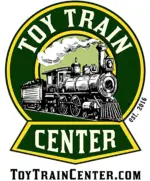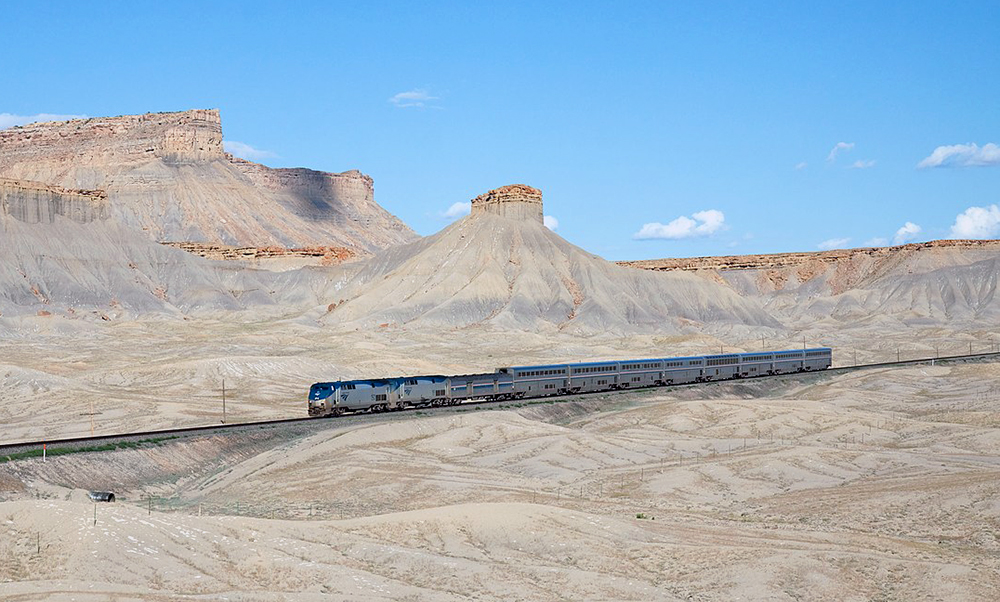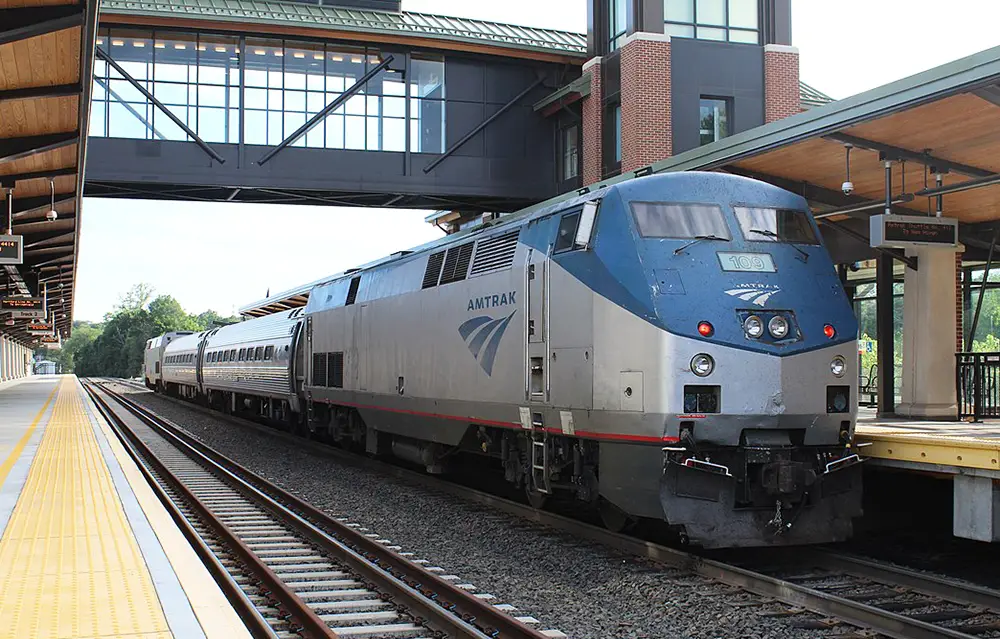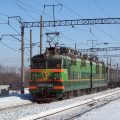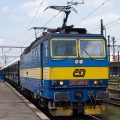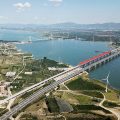Amtrak has been servicing American travelers since 1971. They have made public transport in the continental United States of America easier than it has ever been before.
Here are 25 amazing facts about Amtrak Railway:
Photo source: Wikimedia Commons
#1 – Amtrak is not actually an acronym for anything, as many people may originally think. It comes from the words American and track joined to together: “Amtrak”. Maybe it is not the most creative, but it has a certain ring to it.
#2 – Amtrak does not just reside in just America, but Amtrak also owns the track and has operational trains in three different Canadian provinces. That brings Amtrak’s coverage up to 46 states and 3 provinces. Keep in mind you will need a passport to enter into Canada and when returning to the United States. Here’s the Complete North American Train Travel Guide.
#3 – Republican senators have come out and spoke about how Amtrak has actually had about $30 billion in federal aid since it began operating in 1971. It actually loses about $700 million a year! For this reason, many politicians think Amtrak should be privatized but doing so may lead to less commitment to providing for as many Americans as possible, as that is a large money sink.
#4 – Amtrak services about 86,000 Americans each day all over the country. Even though this is a lot, it is only about 1% of the American public transport used each day. Compare that to successful rail networks like in the United Kingdom, Germany or France where that number is between 5-8%. That is to be expected when the country you cover is so large though.
#5 – It is possible to participate in wine and cheese tasting onboard the Empire Builder and Coast Starlight Amtrak carriages. This is a very popular choice for people who want to experience a bit of the place they are traveling through, as the cheeses and wines actually come from places along the routes. It’s a nice way to embrace the local culture from the comfort of your train.
#6 – In the late 2000s Amtrak had some serious issues with trains being late. The most extreme example of this is the California Zephyr which had just a 5% on-time record in 2008. Amtraks on-time average for 2008 was 74.7%, which increased to 84.7% in 2009. Comparatively, Japanese trains have about a 99.9% on-time rate.
#7 – There is a large variety of sleeper cabins available, depending on your needs and budget. Some cabins even come with a double bed, room for the kids, and a private bathroom with a shower included. Not bad for those long haul journeys.
#8 – Amtrak is one of the only train services worldwide that offers complimentary breakfast in bed; the attendants will bring your morning meal to your room for you if you wish. If you did not opt for a sleeper car, you will have to make do eating in your chair. Maybe that’s best to avoid crumbs in the bed.
#9 – If you are very safety-minded, take heart that Amtrak is one of the safest forms of transport in the United States. There are half as many deaths on Amtrak trains as there are on busses each year in the USA. You are 1600% more likely to be harmed in a car accident than you are to be harmed on an Amtrak train.
Photo source: Wikimedia Commons
#10 – Amtrak boasts that it is 14% more efficient than America’s domestic air travel options and 31% more efficient than traveling by car. For those of you who are environmentally conscious, this should help ease your mind, as rail travel is the most eco-friendly way of traveling available to the general public. You can read in more detail about just how much more environmentally sustainable Amtrak is than alternative options here in this short article.
#11 – Because of its government-owned status, Amtrak is actually legally required to operate a national rail system. This contributes to why it loses so much money. Many of its routes are actually massive money sinks but its mission statement is to provide transport across the country. Its legal requirement is to provide that unprofitable transport also, so that’s what it does.
#12 – Amtrak uses a mixture of electric and diesel trains in its fleet. The electric fleet is powered by overhead cables only between Boston and Washington or Philadelphia and Harrisburg. Other than this, the rest of their fleet is diesel locomotives. Even so, it is still better for the planet than using cars or planes.
#13 – Going back to the reliability aspect, Amtrak is just about 1% more likely to be on time, with no delays or without being canceled than flying domestic is in the United States. If you are looking for reliability, not speed, train travel may be the way to go.
#14 – Amtrak services over 500 destinations in the continental United States and Canada. This is such a huge area for one company to manage. Even if it’s government-aided, it is still incredibly impressive just how much reach Amtrak has.
Here’s a video review of the Amtrak Zephyr Coach Class:
Video Credit: Eric Douds – Click Here to watch directly on YouTube
#15 – The NEC (or the Northeastern Corridor) is Amtrak’s most popular route; it runs from Boston to Washington D.C via New York and Philadelphia. It accounted for as much as 38% of the passengers in the 2018 fiscal year. The NEC is a very famous route, one that Amtrak has managed to almost monopolize – you can read more about it here.
#16 – Amtrak track coverage is very extensive, and throughout all its operating territory Amtrak uses 21,000 miles of track. Around 70% of that track is privately owned because, just like the United Kingdom, the United States has also privatized some of its tracks to save money.
#17 – Running a successful railway across a whole continent requires lots of infrastructures, so Amtrak owns 18 miles worth of tunnels, 23 in total. They also own a whopping 1,200 bridges combining to equal only 42 miles in total.
#18 – Amtrak owns and operates the longest passenger train in the world, which includes 40 carriages some for people to use and some for transporting cars across the country. It is an 850 mile journey from Virginia to Florida, without stopping. It can take almost 12 hours sometimes.
#19 – The amount of public capital needed for each Amtrak passenger is about $40 per person. Whereas cost per person for federal road maintenance is as much as $700 per vehicle. The act of maintaining rail is so much more financially sustainable than that of maintaining roads. But roads must cover much more ground of course, which leads to a massive hike in cost.
#20 – Amtrak has one of the slowest speeds of any developed nation’s rail travel. The average speeds are as slow as 82mph, whereas in Europe or Japan they arrive closer to 150mph. There are arguments to be made that the United States has more people they have to try and provide a service for, but they are also only one country rather than 33 trying to collaborate like the European Union.
Photo source: Wikimedia Commons
#21 – Not many trains run below sea level, but Amtrak actually runs 100 feet below sea level along California’s Salton Sea. This is especially interesting because of the fact that the Sunset Limited, the train that runs this route, is also the oldest train with an unchanged name. It has been named that since it was made in 1894!
#22 – Amtrak also makes use of the oldest station in America. The oldest train station that exists and is also still in use today is Martinsburg in West Virginia. This station is incredibly old, being built in 1848. It is a testament to the love and dedication that has gone into maintaining it that it is still standing today, more than 170 years later.
#23 – The highest Amtrak station in America is the Fraser Winter Park Station in Colorado. This station is 8,561 feet above sea level. This means that Amtrak runs at heights that are as much as 8,600 feet different (100 feet below sea level to 8,561 feet high).
#24 – The best value for money pass for Amtrak is the 45-day pass that allows you up to 18 trips within those 45 days. It is nowhere near as much value for money as the Eurail Pass, the European counterpart, but it is still the best value for money way of seeing the United States by train. Being able to see 46 states in such an intimate way is only possible by this extensive rail network. No bus or plane will show you as much so quickly.
#25 – In 1970, Amtrak almost collapsed completely due to a lack of cash flow. During this year, the postal service changed from delivering by train to shipping long distances by plane and then using trucks for the rest of the way. This sped up the process with which mail could be shipped across the farthest reaches of the country. The downside was that Amtrak lost one of its biggest customers and thus began having cash flow problems. President Richard Nixon signed into effect a bill to allow government funding to help keep Amtrak afloat. This saved Amtrak and saved public train transport for the American people.
Amtrak is far from perfect. In a lot of ways, it does not hold up to the Eurail, its European counterparts, but it also has a much bigger task. Amtrak has opened America’s eyes to the opportunities rail travel has to offer in the modern world, and maybe in time it will be able to compete with Europe, China, and Japan. What Amtrak does great, however, is make sure that it offers its service to as many American citizens as possible, no matter the cost. It may not be cheap on the American taxpayer, but it is certainly worth it.
You might also like the following facts about the best railway journeys in the world:
- 25 Amazing Facts About the Shinkansen, the Japanese Bullet Train
- 25 Amazing Facts About the Trans-Siberian Railway
- 25 Amazing Facts About the Orient Express
- 25 Amazing Facts About the Bangkok-Ayutthaya Railway
- 25 Amazing Facts About the Trans-Mongolian Railway
- 25 Amazing Facts About the Beijing-Lhasa Railway
- 25 Amazing Facts About the Thai-Burma Railway
